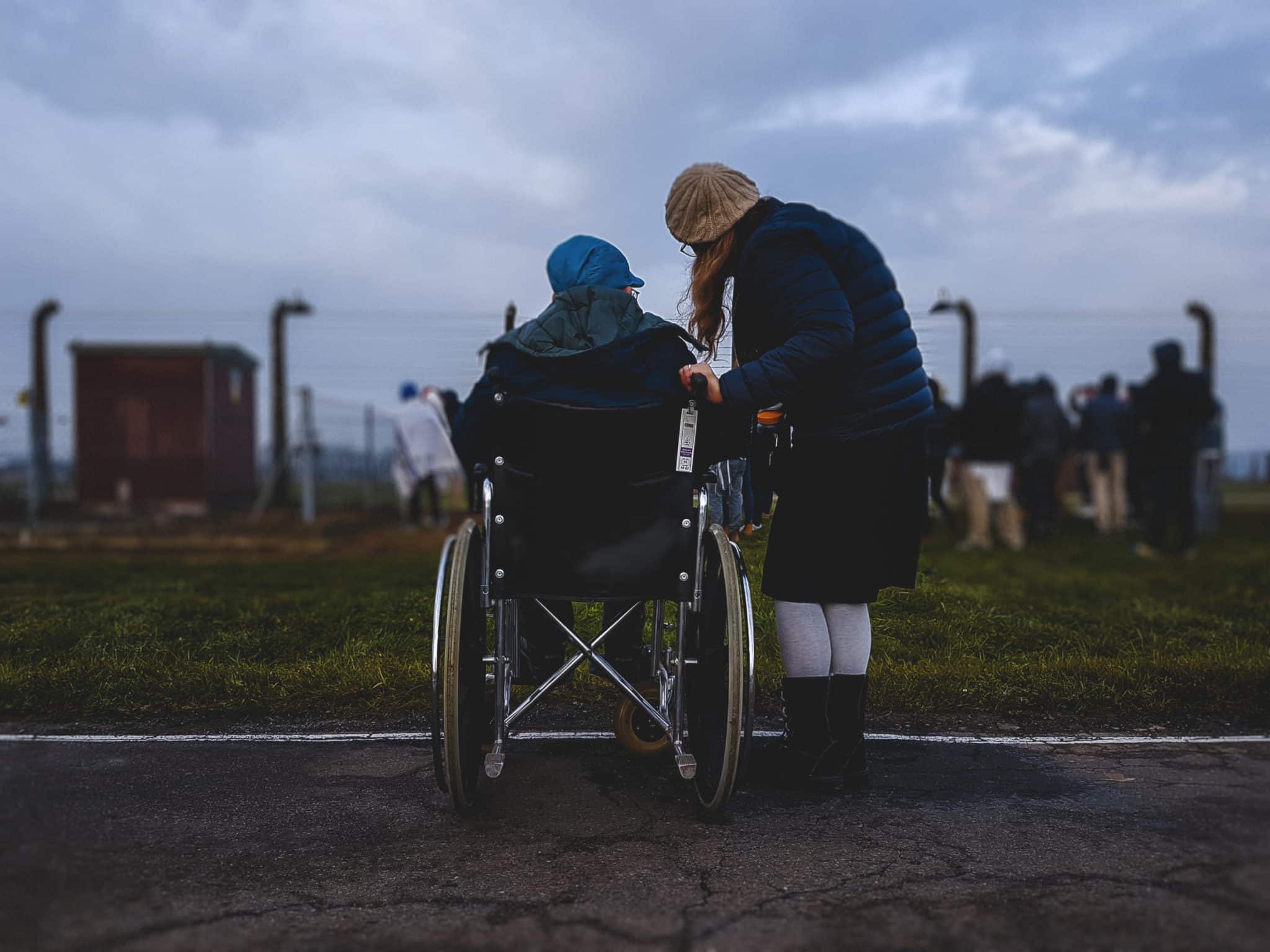How to help someone stand up safely

They may need help getting out of a chair, out of a bathtub, or up from the toilet. Getting in or out of a car or simply getting up in the morning and out of bed can be difficult and could put them (and you!) at risk if these are not done correctly.
This article will outline what to consider when someone needs help standing up or getting up from a toilet seat, a bed, a chair, etc. and will provide tips for you, the caregiver, for how to offer assistance so that you both remain safe.
When getting ready to stand
Before you help someone stand up, consider the following:
- Is the bed/chair at the proper height?
- If the bed/chair is height-adjustable, position it so the level of their hips is sitting slightly higher than their knees. This will make it easier to stand up, as their body will be in a more upright position.
- Is the walker/cane/wheelchair nearby?
- Having the mobility aid close by will decrease the risk of falling
-
- Having the mobility aid close by will decrease the risk of falling while trying to stand and it can provide the individual with support once they are in the standing position.
- Is the area clear of objects or obstacles?
- Clearing the area of obstacles prior to standing is important to decrease the risk of tripping or falling.
Communicate the “run through”
It is very important to communicate with the person in your care and verbally go over how you will help and how to safely stand up from the chair (or bed, toilet, etc.). Talking through the transfer process will ensure that both of you know what to expect and that you are working together. Communication is key to ensuring safe transfers!
Proper body mechanics for standing
Good body mechanics for caregivers is essential when helping others to stand. Good body mechanics when lifting will decrease the risk of injury to yourself and the person you are caring for. Here are some tips to consider:
- Stay close and stand beside the person you are helping
- Standing beside the person will make the transfer easier on you. You will have more control of the person’s body during the transfer and you will use less energy.
- Do not lift from behind – You are at risk of injuring your back when you lift someone from behind as it puts your back and shoulders in an awkward position.
- Do not lift from the front – If you try to lift someone while standing in front of them, you are at risk of falling or injuring the person you are caring for.
- Avoid pulling up on the arm(s) or hand(s)
- Pulling on the person’s arm(s) or hand(s) places a lot of stress on the individual’s shoulder(s) that could result in a rotator cuff injury such as a muscle or tendon tear.
- When holding the person’s arm, stand as close to them as possible to minimize the risk of injury.
- Prepare your body for the transfer
- Bend at your knees and hips and keep your spine in a neutral position.
- Have a slightly wider stance to help yourself stabilize.
- Engage your muscles and ready your body for the transfer.
Stand up slow and steady = safe lift off!
When you are ready to help someone stand up, keep in mind the following:
- Go slow
- Resist the temptation to get them up quickly. The person could get dizzy from getting up too quickly and there is a risk of injuring the body as well.
- Be a cheerleader
- Encourage the person to do as much as possible to assist with standing up. This will make their muscles work as well as improve their strength and independence.
- Stabilize while standing
- Once standing (and before moving), ensure that the person is feeling well and adjusted to the position (no dizzy spells!).
- When the person confirms that he/she is okay, you have completed the standing transfer and can continue on with the day!
- If you have any questions or concerns about these transferring techniques or how to help the person in your care stand up safely, please consider speaking with a physiotherapist, an occupational therapist, or another health care professional.









